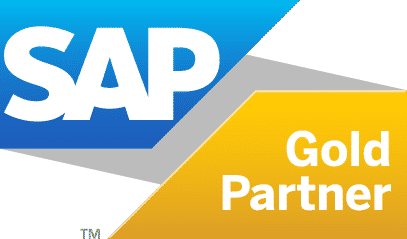
The solutions that organizations seek are those that not only synchronize internal applications and systems and also connect them outside to the methods of their customers, suppliers, and partners. Business process management seeks to develop approaches that allow companies to adjust their objectives to meet their customers’ needs better. Because of this, organizations benefit from greater visibility and flexibility, which leads to increased efficiency and innovative thinking.
In addition, SAP integration offers workflow automation, which promotes efficient interaction between process models and data models, resulting in increased productivity. The goal of re-engineering business processes is to increase efficiency throughout the business model by assisting firms in evaluating and implementing best practices for process automation and business integration across the enterprise. Functions that are critical to the running of the business can be automated and synched to meet previously established business standards. To increase visibility and improve cross-team communication by linking core business activities such as marketing, sales, and purchasing with support and accounting. Because of the automation of essential business operations enabled by SAP Integration, businesses may devote more resources and attention to generating new business opportunities.
If SAP integration lacks the requisite features, then it results in unnecessary complexity. As a result of the necessity for seamless connectivity, many firms choose to develop custom SAP integration. A developer must construct point-to-point integrations among applications and services for SAP integration to be successful. With the expansion of a company’s operations and, as a result, the number of integrations, the point-to-point architecture becomes increasingly complex and expensive, necessitating increased spending.
THINGS TO NOTE:
The Application Programming Interface (API), which is a significant technology trend, has the potential to alleviate this problem. It allows companies to provide their ecosystems with standardized access to data and application activities through an API interface. APIs will be more quickly coalesced and disseminated to developers as demand dictates, allowing the transition to the new connected enterprise — one that exists outside its own four walls — to be more simply done.
Through APIs, modern interoperability can be achieved both within and outside of the company. APIs are used at the team level within the company. In contrast, consumers and partners can combine and customize APIs from various sources outside the organization. This provides the opportunity to mix and recompose skills and information as required. To be truly useful, SAP APIs must be reusable and modular. Still, nonfunctional requirements such as compliance and security must also be impervious to outside interference. A lightweight, mobile-centric architecture must meet these requirements healthily and efficiently.
More than that, an API is needed for SAP integration. It is only possible to use the API as a display layer on top of a collection of orchestration and connectivity flows. The orchestration and connectivity described above are critical because, without them, API to SAP API connectivity is another way to establish point-to-point interaction across disparate systems. The API-led connectivity approach that we recommend for SAP integration is described in detail below. In this technique, mechanisms for linking and disclosing business assets are defined that have been thoroughly evaluated. It also alters how information technology operates, allowing for decentralized access to data and capabilities while maintaining a solid foundation in centralized governance.
When it comes to API-led connectivity, a distinct ‘connectivity-building block’ is required, which has three different elements:
- API: Provides data in a manner that can be administered and is secure via an API interface.
- The application of logic to data in transformation and enrichment are examples of orchestration.
- Providing access to source data, whether created by physical systems or by external services, is what connectivity is all about.
This approach to SAP Integration necessitates a shift in the way information technology is managed. It does, however, enable the company to take advantage of the potential presented by digital transformation. SAP integration’s speed and usability are inevitably improved due to simplifying it. You can construct new services based on data from a variety of sources. Unlike their competitors, new services can be introduced considerably more swiftly with the help of this company. Many devices don’t have to be recorded to change user experience and apps and services. SAP connection also allows you to take advantage of additional business prospects that have arisen recently. With SAP integration, your company can devote more resources to innovation, strategy, and productivity rather than spending countless hours repairing bugs in the code.
Highbar Technocrat is one of the leading end-to-end IT solution providers for the Infrastructure, EC&O, Real Estate, and Power sectors. They are SAP Gold partners and offer a wide bouquet of digitally integrated solutions ranging from implementing SAP-based ERP solutions like Rise with S/4HANA, Cloud-based solutions to 5D BIM for mega infra-projects, RPA & IoT solutions, and many more. With an in-depth understanding and core competence of the construction & infrastructure industry, Highbar is the perfect blend of domain knowledge in the infrastructure business with a team that is well equipped to understand and relate to the requirements of the sector.
To know more write us at enquiry@highbartech.com or call +91 89767 11399




